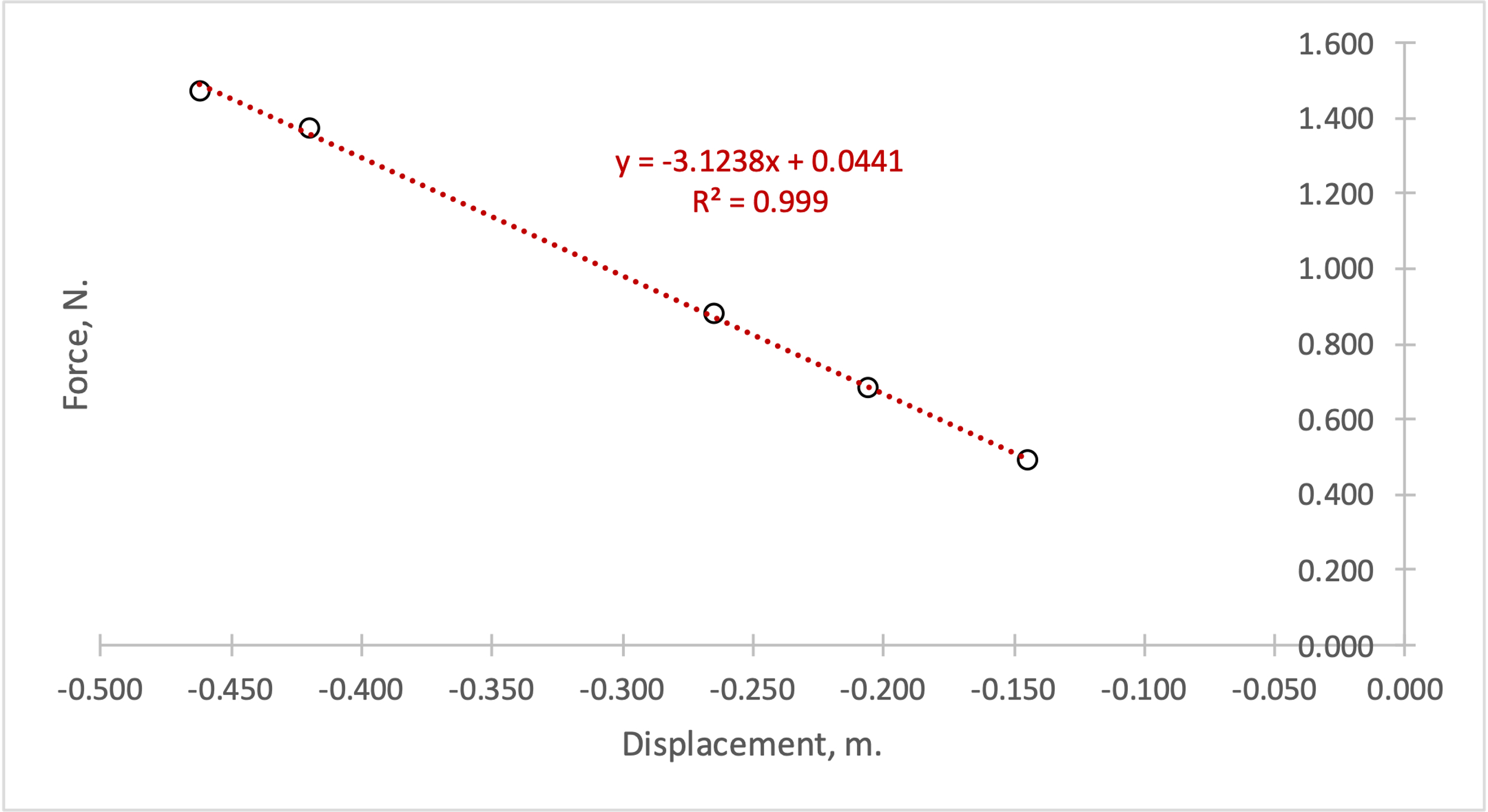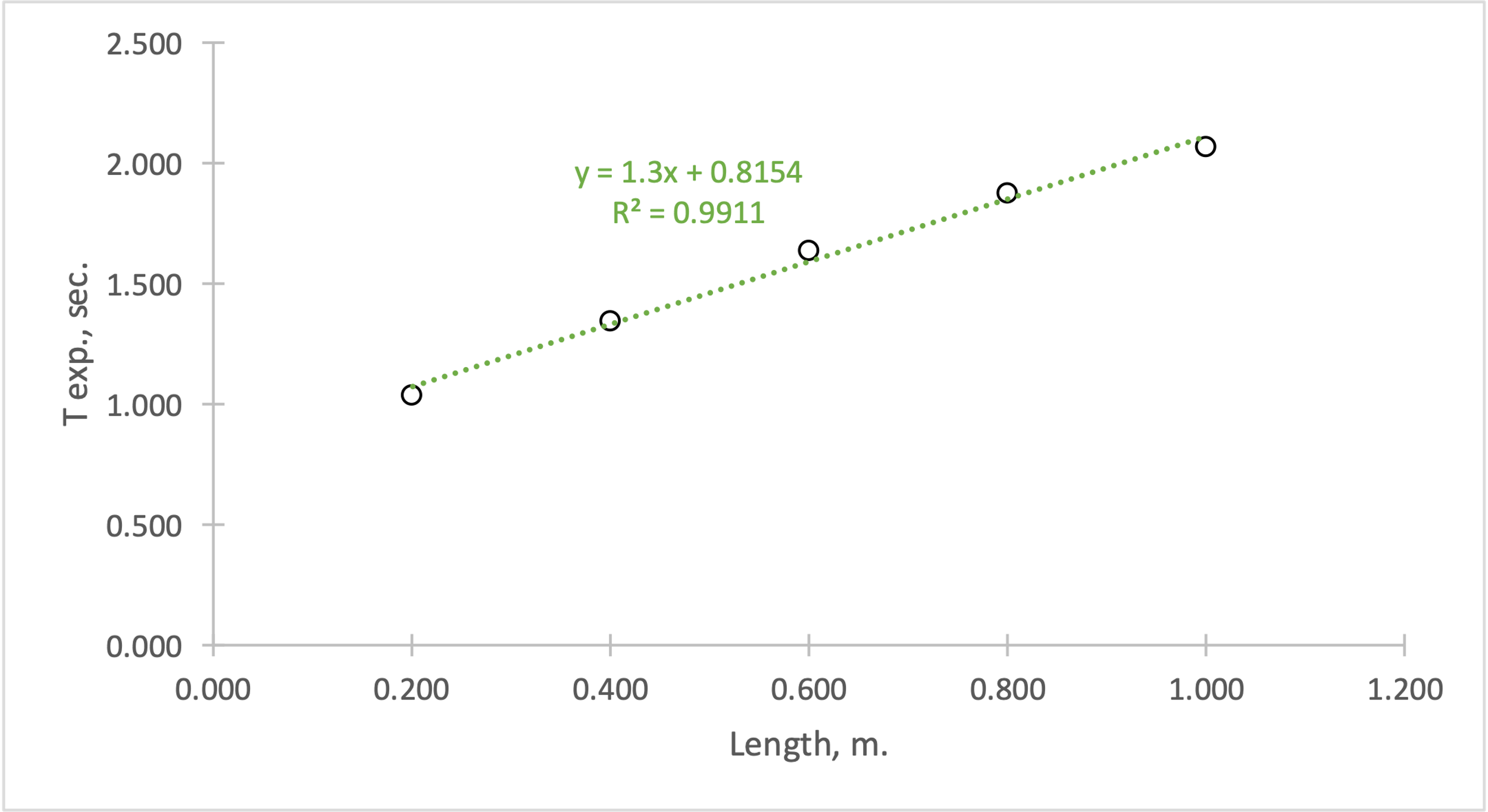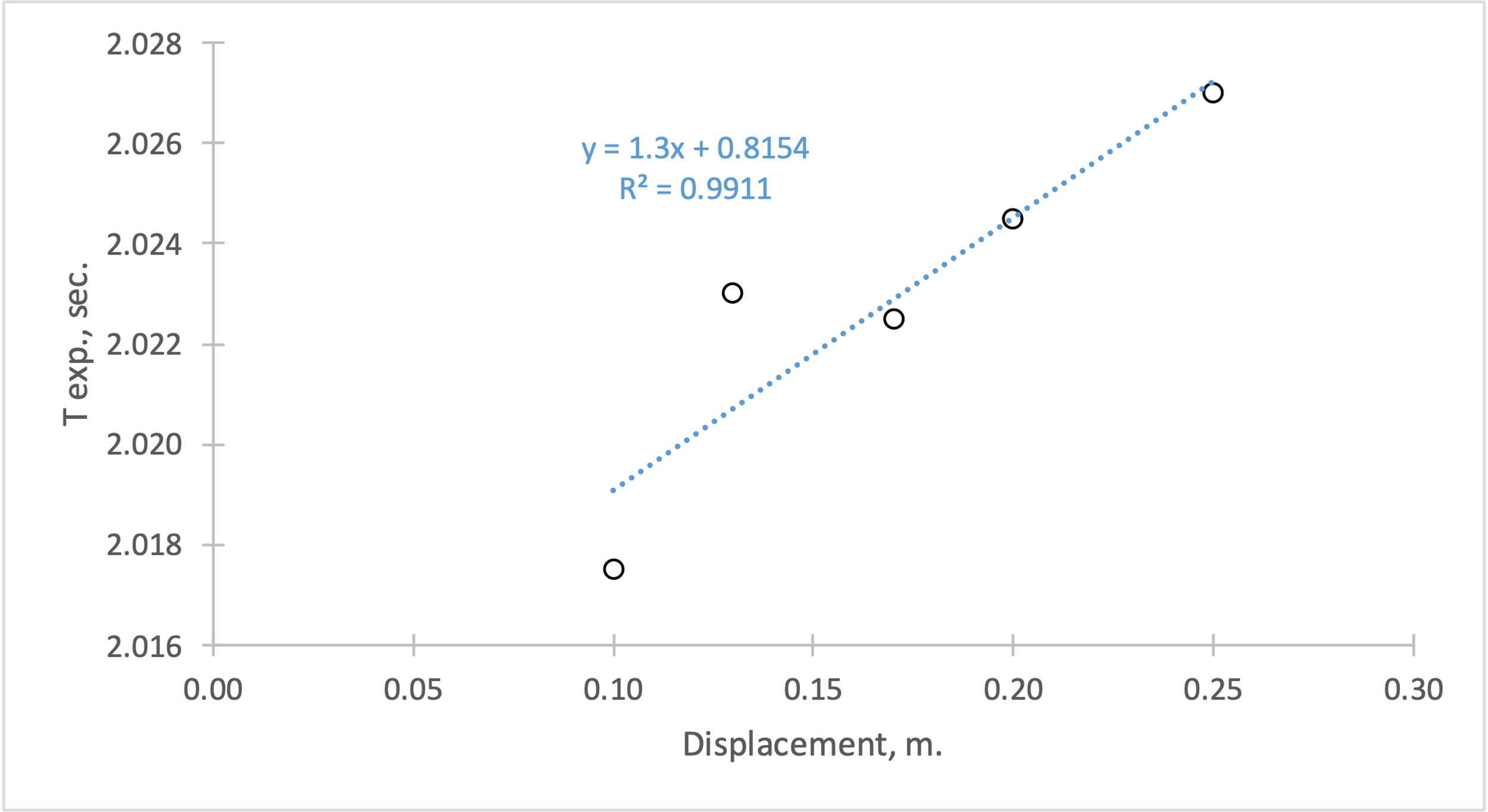Introduction
The present work verifies the dynamics of oscillations for cases depending on the displacement of a pendulum and its mass. The task for the experiment is to check the applicability of Hooke’s law and the basic metrics of simple oscillation processes with the construction of graphs and the search for relationships between the variables. In addition, the paper offers a calculation for g with a comparison with the reference value and explains the reason for the deviations.
Data and Analysis
In this experiment, the dynamics were measured for two cases of oscillation: when it depended on the mass of the suspended weight and when the oscillation differed in initial displacement with a stable mass of 0.36 kg. As shown in Table 1, there was a consistent increase in the time required to oscillate as the displacement increased. Table 2 shows how the oscillation dynamics depended on the mass of the suspended weight. The force (in N) determined through the mass of the weight led to a reduction in the oscillation time, which means that the heavier the object on the pendulum, the faster the complete oscillations were made. Fig. 1 shows the sweep of oscillations for positions and velocity of the pendulum as a function of time. It is evident from Figure 1 that the oscillations were of a damped nature, as the amplitude of the pendulum position and velocity decreased over time. This does not seem surprising because the lower velocity of oscillations led to a smaller displacement of the pendulum.
Table 1: Data of measurements during the first experiment
Table 2: Data of measurements during the second part of the experiment

Figure 2 shows the dependence of the Hooke force on the displacement of the pendulum and plots a linear trend to determine the relationship between the variables. One can see that the relationship is strictly linear: the coefficient of determination is exceptionally high, which indicates the reliability of the constructed model. It is noteworthy that the relationship is negative: that is, as the displacement increases, there is a decrease in Hooke’s force. Considering the formula F= -k∆x, one can see that there is indeed an inverse relationship between F and ∆x. The slope (-3.1238) in this case determines the stiffness coefficient of the spring from which the pendulum is made, taken as an absolute number.

Uncertainty in this experiment is defined as measurement inaccuracy, which has a cumulative effect and potentially influences the uncertainty of the results; in other words, the higher the uncertainty of direct measurements, the less accurate the conclusions for a given laboratory work will be. However, increasing the number of repetitions followed by averaging can reduce the uncertainty somewhat through systematically consistent procedures. Figure 3 shows the linear upward dependence of the period with increasing pendulum length; this is the expected relationship, given the formula T=2π√(L/g), in which T is directly proportional to the root L. For this formula, the value of g was calculated from the data, and the answer was 8.59 m/s2, which is about 13% lower than the reference value (9.81 m/s2) and may be due to the accumulation of errors. A similar relationship was shown for the period-displacement relation, although it is worth pointing out that the change in displacement was not that large and, in theory, the period does not depend on the displacement.


Conclusion
To summarize, it should be said that this work confirmed the theoretically expected relationships between the variables in the dynamics of oscillations. It was shown that the velocity and position of the pendulum are damped harmonic functions, Hooke’s force depended linearly on the displacement, and the period on the length of the pendulum. For the relationship between period and displacement, the relationship was not strictly linear, and a slight change in period could indicate that there was no relationship between the variables. The calculated value of g was 13% lower than expected, which could be an indication of the influence of uncertainties and errors.